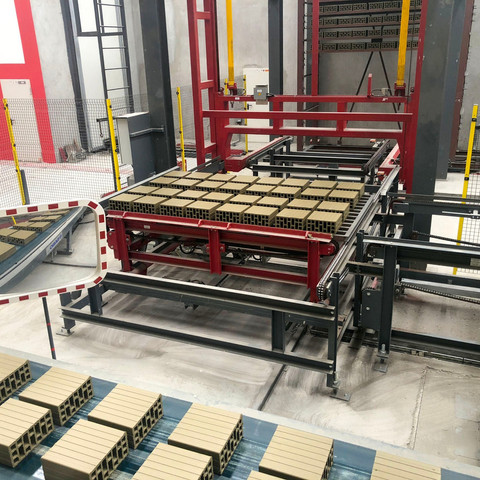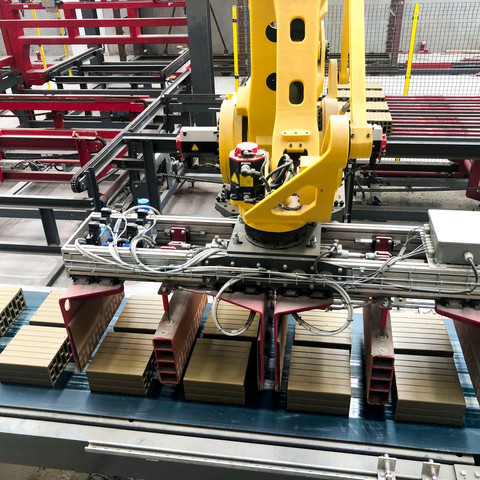Keramika Burgas, Bulgaria
- May 28, 2020
- 3 min read
Updated: Jun 18, 2020
Keramika Burgas, is one of the largest brick producers to Bulgaria - Burgas, assigned to SABO S.A. during summer of 2017, the modernization of the brick plant.
This is a project following a series of others recent projects in Europe as well as a lot of others in the past that SABO completed successfully.
The modernization involved the cutting area, the dryer loading and unloading areas, new tunnel dryer and the setting machine.
The first part of the project was the supply of a new electronic cutter SABO DF800 for cutting the wet blocks in order the old existing one to be replaced. The new cutter is able to work with single or double column extrusion, equipped with inclined cutting wires and automatic wires cleaning system ensuring the smoothest and accurate cutting.
After cutter the wet blocks are transferred with a conveyor belt to the new loading Robot which is in total synchronization with the belt and loads the wet material on the dryer laths. The gripper’s robot is able to handle all different types of products.
SABO at the wet area installed a new chain transportation system for the transportation of the frames with wet material till the position of the new system with fork for loading dryer car. Before the loading position, a line with chains for transporting the empty frames was installed together with a gripper for the empty dryer frames in order to make a storage of empty frames, before arriving at the wet Robot’s loading area.
Tunnel Dryer
This type of dryer is an improvement on the conventional tunnel dryer that has been developed by SABO with high drying sensitivity. The design ensures high humidity saturation contents, strong ventilation on both sides of the dryer cars, as well as symmetrical temperature conditions at the cross-section of the dryer.
The internal ventilation is characterized by strong blowing and drafting effects through a high-volume technique and up to the point that most of the shrinkage has taken place according to the clay characteristics. After this point the drying internal ventilation is performed with conical fans having the motors out of the dryer building, in a way that high temperatures (more than 100 °C) can be applied. At his final stage all the remaining humidity can be quickly removed.
The dryer is controlled by a modern SCADA system that incorporates all the proven regulation techniques. The system is following certain temperature, humidity recipes in relation to perforation, materials and production capacity. The dryer is supported by small size heat exchangers having minor impact on drying energy.
After the drying procedure, we have a new system with fork to unload the dryer car with dry materials. After the unloading of the dry material from the frames is done with a second new Robot equipped with a special double gripper. The Robot deposits the bricks on the new dry belts and transfer the dry materials until setting line with programming bench and robot which load the kiln car.
The setting area is designed for loading also tilted the bricks on the kiln cars thus the programming bench is equipped with a tilting unit for the materials that need tilting.
After programming, the layers of bricks are transferred to the final conveyor bench through a pushing system and the new setting Robot takes over the loading of the bricks on the kiln cars. The flexibility of the robot gives the chance to have several different settings on the kiln cars and handling the total range of produced materials. The fixation of the kiln car at the exact loading position is done by a centering system ensuring the stable positioning of the car during loading.
The project involved except of installation of new equipment the usage of existing equipment too. SABO undertook also the supply of new electric boards and programming of the whole wet-dry lines, including new machinery ensuring in such way the efficient operation of the line.
All the areas, cutting, loading - unloading of the dryer and setting area after modernization is controlled by only two operators.













Comments